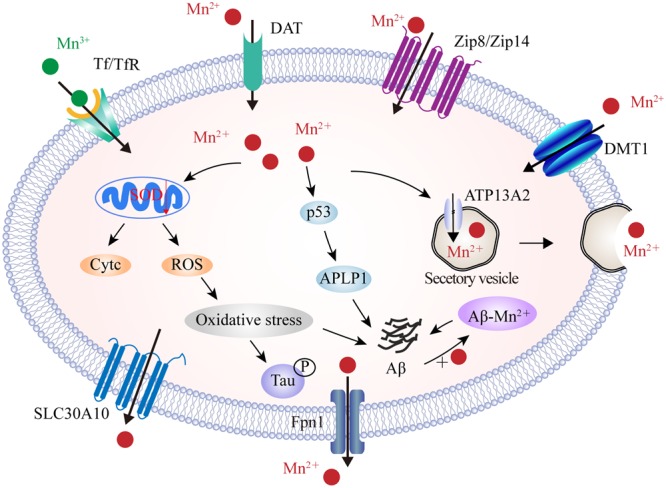FIGURE 4.

The identified manganese transport system and its association with AD. On the cell membrane, DMT1, ZIP8/ZIP14, and DAT are responsible for Mn2+ influx, while Tf/TfR mediates Mn3+ entry into the endosome through endocytosis and is eventually released into the cytoplasm by DMT1. In contrast, SLC30A10 and Fpn transport Mn2+ out of cells. Furthermore, ATP13A2 and SPCA1 also transport Mn2+ into the lysosomes and Golgi for bioavailability or by forming secretary vesicles that facilitate Mn2+ efflux. In the AD brain, Mn2+ exposure induces mitochondrial oxidative stress that further advances tau phosphorylation. Moreover, high Mn2+ levels increase the expression of p53 and its transcriptional target gene, APLP1, which consists of APP. Increased APLP1 expression promotes the generation of Aβ peptides. Mn2+ could also bind to Aβ and enhance its aggregation. DAT, dopamine transporter; SLC30A10, solute carrier family 30 member 10; ATP13A2, ATPase 13A2; SPCA1, secretory pathway Ca2+-ATPase 1; APLP1, amyloid-b precursor-like protein 1.
